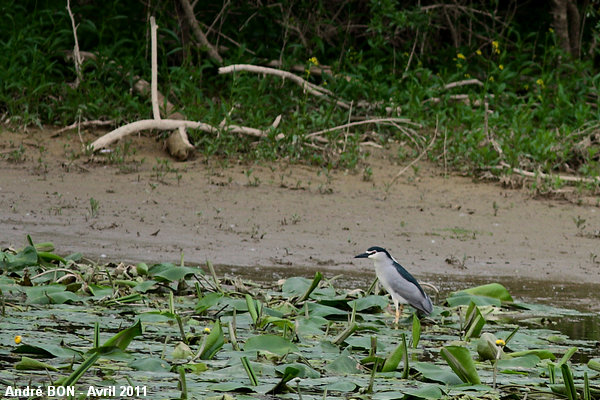
| Black-crowned Night Heron (Nycticorax nycticorax (Linnaeus, 1758)) |

|
|
Scientific name: Nycticorax nycticorax (Linnaeus, 1758) Common name: Black-crowned Night Heron French name: Bihoreau gris, Héron bihoreau Order: Pelecaniformes Family: Ardeidae Size: Body size : 58 to 65 cm; Weight: 730 to 1015 g; Wingspan: 115 to 118 cm. Habitat: Near rivers, ponds, lakes and marshes bordered with dense vegetation. Food: The Black-crowned Night Heron chases its preys by waiting perfectly immobile in shallow water. It mainly feeds on fishes and amphibians but also on water insects and earthworms. Nesting: The Black-crowned Night Heron nests in colonies inside bushes or reed beds. The male starts to build the nest and the female finishes the work. There are 4 or 5 eggs per brood. Migration: The Black-crowned Night Herons breeding in France winter in Sub-Saharan Africa. However a few birds are sedentary and winter in France. Geographic area: Worldwide widespread, only missing in the polar regions, in Australia and New Zeeland. |
The Black-crowned Night Heron is a small size heron with the head down between the shoulders and with short legs. On adults, the cap and the upper side parts are black. The wings, the rump and the tail are grey. The under side parts are white. In nuptial plumage, there are two to four white elongated feathers on the nape. The eyes are red. The legs are greenish yellow. The thick black bill is slightly curved downwards. Juveniles are brown striated with yellow. This bird is mainly active during the night. You can hear its loud, croak-like call at dawn or dusk. |
| [To know more about the Black-crowned Night Heron] [Top] |

|
One first time for me. I have already heard the loud Black-crowned Night Heron's call, just after nightfall, but it's the first time I can see one of them. |